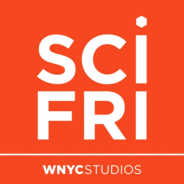Betül Kaçar started her scientific career as a biochemist, working on an enzyme found in zebrafish. But then she found her calling: investigating some of the hardest questions in evolutionary biology by resurrecting ancient life forms. NASA administrator Melissa Kirven-Brooks recalls the fellowship application that put Betül on her radar. And evolutionary biologist and geneticist Harmit Malik weighs in on what makes Betül's project so hard, and why he’s kind of jealous he didn’t think of it first. Betül previously received a Hypothesis Fund Award for her research.Guest:Dr. Betül Kaçar, professor at the University of Wisconsin-Madison and leader of a NASA-funded multi-institutional research center focusing on life’s early evolution“The Leap” is a 10-episode audio series that profiles scientists willing to take big risks to push the boundaries of discovery. It premieres on Science Friday’s podcast feed every Monday until July 21. “The Leap” is a production of the Hypothesis Fund, brought to you in partnership with Science Friday.Transcript will be available after the show airs on sciencefriday.com.
Subscribe to this podcast. Plus, to stay updated on all things science, sign up for Science Friday's newsletters.

Talk
Science Friday Folgen
Covering the outer reaches of space to the tiniest microbes in our bodies, Science Friday is the source for entertaining and educational stories about science, technology, and other cool stuff.
Folgen von Science Friday
1191 Folgen
-
Folge vom 27.05.2025The Leap: This Is Going To Kill Your Career
-
Folge vom 23.05.2025The Science Of That Big Stunt From The New ‘Mission: Impossible’The “Mission: Impossible” franchise is known for its big stunts, and the newest film is no exception. Producer Kathleen Davis talks to the film’s stunt coordinator, Wade Eastwood, about the science behind one big underwater scene. Plus, psychologist Kenneth Carter joins Host Flora Lichtman to talk about what makes high-adrenaline adventurers tick.Take this questionnaire to see where you fall on the "sensation scale" Carter mentioned in this episode.Guests: Wade Eastwood is a stunt coordinator, stunt performer, and director in the film and television industry. He was the second unit director and stunt coordinator on "Mission: Impossible - The Final Reckoning."Dr. Kenneth Carter is a Professor of Psychology at Oxford College of Emory University, and the author of Buzz!: Inside the Minds of Thrill-Seekers, Daredevils, and Adrenaline Junkies.Transcript will be available after the show airs on sciencefriday.com. Subscribe to this podcast. Plus, to stay updated on all things science, sign up for Science Friday's newsletters.
-
Folge vom 22.05.2025Meet A Pioneer Of Modern Weather PredictionClimate scientist Jagadish Shukla grew up in a small village in rural India, where people starved if the monsoon season didn’t bring rain. To help his village, he set out to become a scientist and discover a way to predict the seasons—an unthinkable idea at the time, in the 1960s and ‘70s. Shukla became a pioneer in modern weather forecasting, and he tells his unlikely story in his new memoir, A Billion Butterflies: A Life in Climate and Chaos Theory. He talks with Host Flora Lichtman about his journey to becoming a leading climate scientist, the state of weather forecasting today, and why forecasting is more important than ever in the face of climate change.Guest:Dr. Jagadish Shukla, author of A Billion Butterflies: A Life in Climate and Chaos Theory and climate scientist at George Mason UniversityTranscripts for each segment will be available after the show airs on sciencefriday.com. Subscribe to this podcast. Plus, to stay updated on all things science, sign up for Science Friday's newsletters.
-
Folge vom 21.05.2025Are Physical Buttons And Knobs Making A Comeback?In recent years, digital touchscreens have replaced many of the buttons and knobs that control various functions in cars. But when Host Ira Flatow went shopping for a new car, he noticed that physical controls seemed to be making a comeback. But will the rise of technologies like voice recognition and automation make cars more button-centric, or less? Ira talks with car ergonomics engineer James Forbes and buttonologist Rachel Plotnick about the advantages and disadvantages of the physical button or knob, and what might lead an automaker to choose one type of control over another.Guests: James Forbes, professor of practice in the department of automotive engineering at Clemson University.Rachel Plotnick, author of Power Button: A History of Pleasure, Panic, and the Politics of Pushing (The MIT Press, 2018).Transcript will be available after the show airs on sciencefriday.com. Subscribe to this podcast. Plus, to stay updated on all things science, sign up for Science Friday's newsletters.
